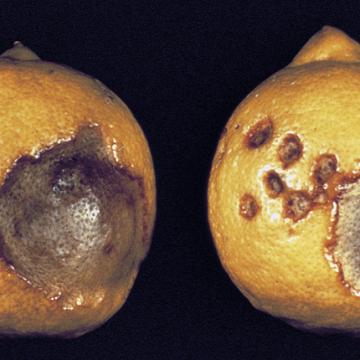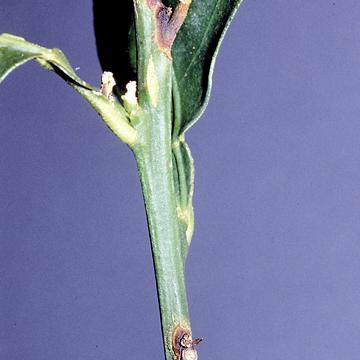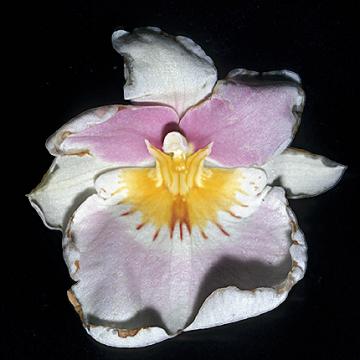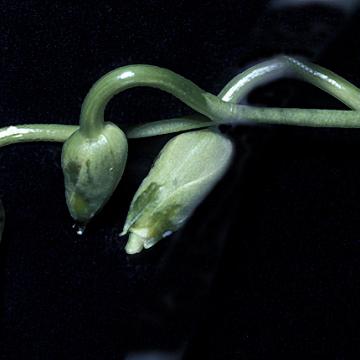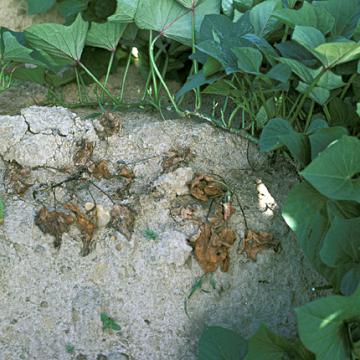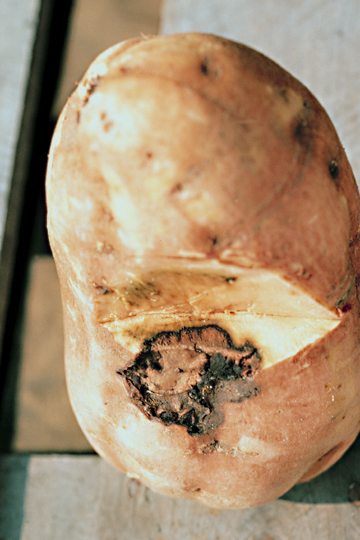DISEASE: Bacterial blast and black pit
HOST: Citrus (Lemon)
The term "black pit" refers to black lesions on fruit, which may be specks or large, sunken pits as seen here. They also may be light tan, later becoming reddish brown to black.
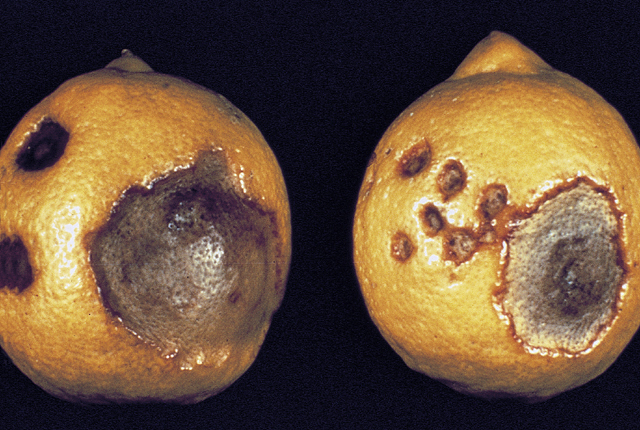
Bacterial blast and black pit | Citrus (Lemon)
DISEASE: Bacterial blast and black pit
HOST: Citrus (Lemon) (Citrus limon)
PATHOGEN: Pseudomonas syringae pv. syringae
SOURCE: J. Menge
DISEASE: Bacterial blast and black pit
HOST: Citrus (Lime)
Characteristic symptoms of brownish black lesions on twigs and leaves (blast), starting with infection of petioles. Black pit refers to brown to black sunken spots on fruit, 5 to 20 mm in diameter.
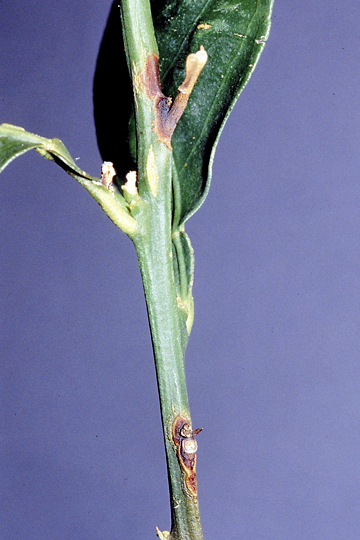
Bacterial blast and black pit | Citrus (Lime)
DISEASE: Bacterial blast and black pit
HOST: Citrus (Lime) (Citrus sp.)
PATHOGEN: Pseudomonas syringae pv. syringae
SOURCE: P. Broadbent
DISEASE: Bacterial bud and petal blight
HOST: Orchid
Miltonia orchid with brownish necrotic areas around edges of flower petals.
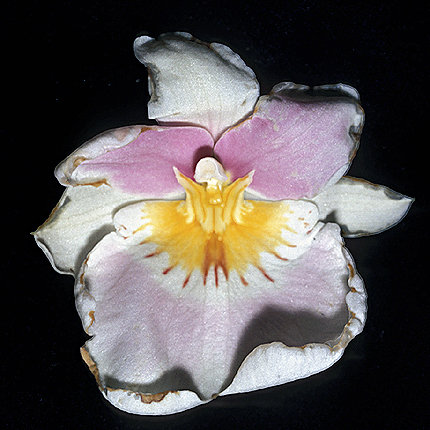
Bacterial bud and petal blight | Orchid
DISEASE: Bacterial bud and petal blight
HOST: Orchid (Miltonia sp.)
PATHOGEN: Acidovorax cattleyae
SOURCE: R. Raabe
DISEASE: Bacterial bud and petal blight
HOST: Orchid
Miltonia orchid with diseased water-soaked flower buds.
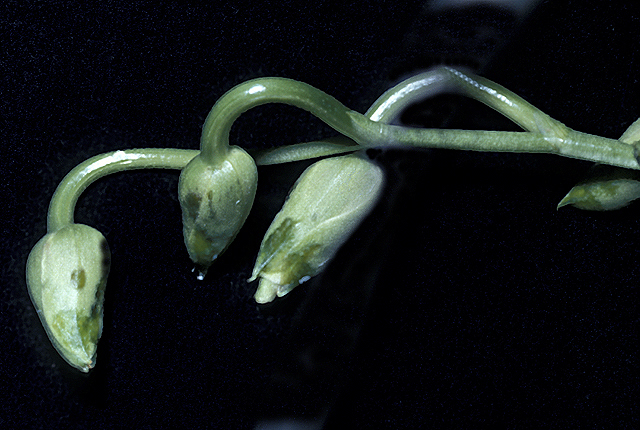
Bacterial bud and petal blight | Orchid
DISEASE: Bacterial bud and petal blight
HOST: Orchid (Miltonia sp.)
PATHOGEN: Acidovorax cattleyae
SOURCE: R. Raabe
DISEASE: Bacterial stem and root rot
HOST: Sweet potato
Collapse of stems and roots caused by systemic activity of the pathogen.
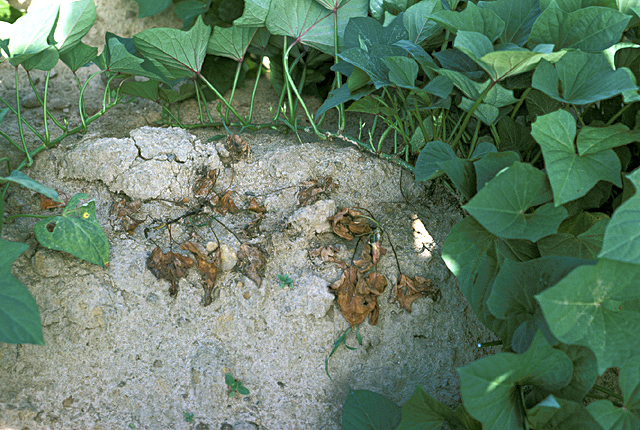
Bacterial stem and root rot | Sweet potato
DISEASE: Bacterial stem and root rot
HOST: Sweet potato (Ipomoea batatas)
PATHOGEN: Dickeya sp.
PATHOGEN SYNONYM: Erwinia chrysanthemi
SOURCE: N. Schaad
DISEASE: Bacterial stem and root rot
HOST: Sweet potato
Rot and collapse of stem, petioles, and leaves caused by systemic infection.
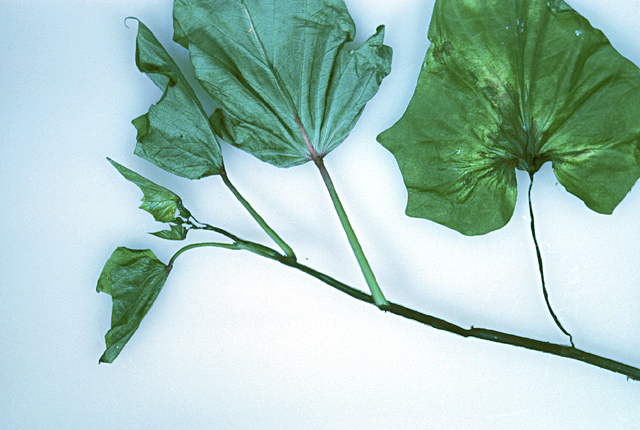
Bacterial stem and root rot | Sweet potato
DISEASE: Bacterial stem and root rot
HOST: Sweet potato (Ipomoea batatas)
PATHOGEN: Dickeya sp.
PATHOGEN SYNONYM: Erwinia chrysanthemi
SOURCE: N. Schaad


